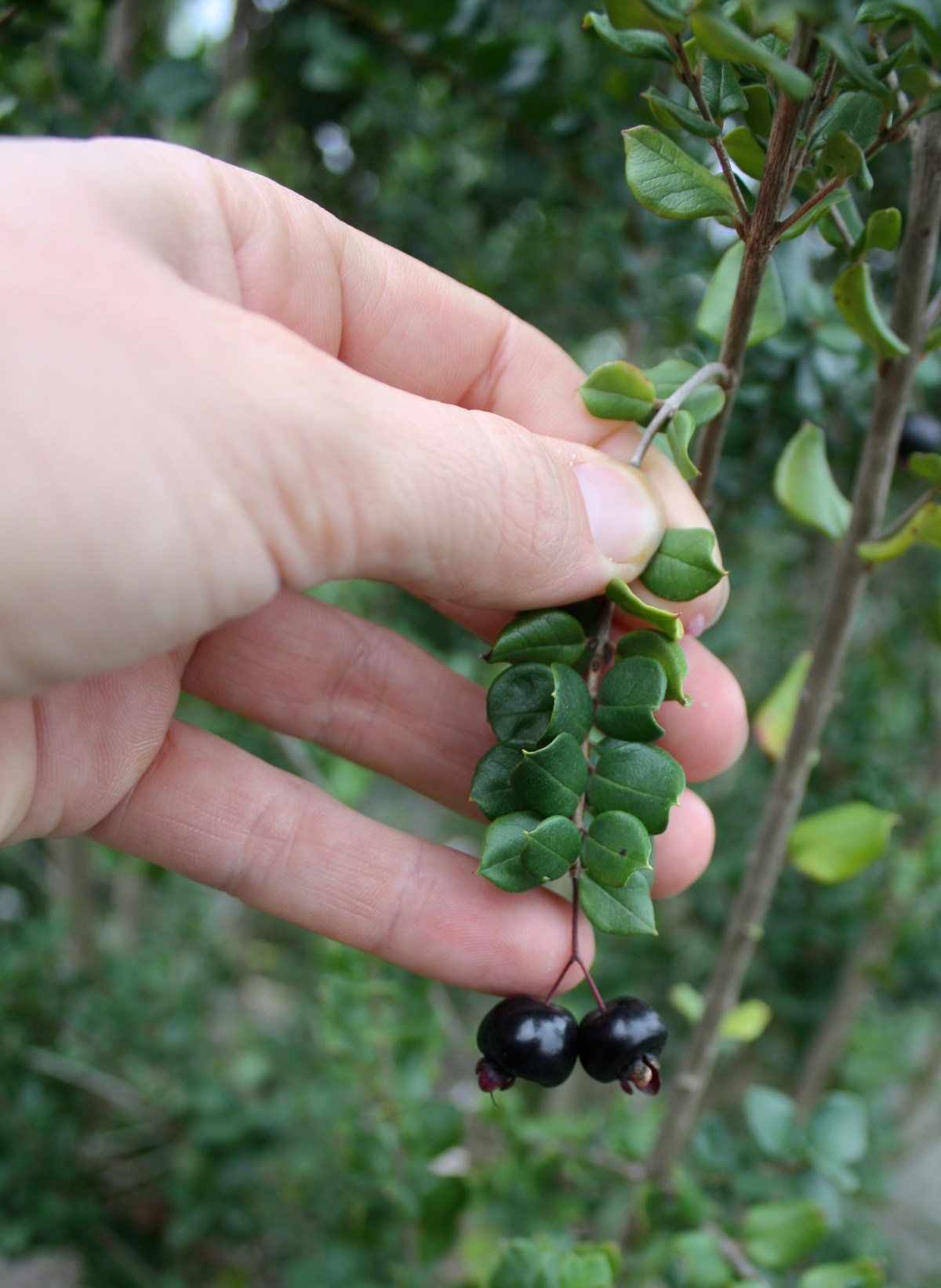L. apiculata's edible, blueberry-like fruit.
BACKGROUND, ORIGIN and DISTRIBUTION
Luma apiculata (also variously known as Eugenia apiculata and Myrtus luma) is a member of the Myrtaceae family and related to such ethnobotanically significant plants as Jaboticaba, Clove, Allspice, Eugenia spp. Psidium spp. etc. The list goes on and on. The Myrtaceae family includes huge number of useful plant species.
Luma apiculata is native to temperate areas of South America, where it can be found growing along waterways in the Valdivian temperate rainforests in Chile and Argentina. The tree can live for hundreds of years and grows up to 15 m (50 ft) tall. 25 meter trees have been recorded.
USES AND ETHNOBOTANY
L. apiculata flower.
L. apiculata produces an abundance of fragrant flowers and an edible berry with a flavor reminiscent of blueberries and Myrtle (M. communis). As with M. communis, there appears to be some variation in fruit quality, ranging from not so good to excellent. Not much information is available on the historic and cultural uses of Luma apiculata, however considering the edibility of the fruit I imagine it was semi domesticated and used for edible and medicinal purposes by pre-Colombian indigenous populations of in its native range.
PROPAGATION AND CULTIVATION
Luma can be propagated from semi-hardwood cuttings or seed. The plant is frost tolerant and relatively drought tolerant once established.Plants will flower and bear fruit within a few years from seed and even sooner from cuttings. This is a great species for temperate climate agroforestry systems.
Luma apiculata does very well in the Bay Area (California).
New flush of leaves on Luma apiculata.


